Imaginative and pretend play is not just an activity for engaging time. It is a great investment of time for developing several skill sets in children from one half year right through till seven.
My son can spend hours talking to his toys. There is always a fanciful idea brewing up in his mind, a story being conceived, characters being brought to life, a gradual progression of the narrative, the heightened climax, and finally the happy ending. On days when his imagination is not galloping on a wild horse, things are more believable.
Below is an image of a movie hall that Ruhaan made.
During the construction of this I witnessed him in silent awe as the construction of the aforementioned commenced and progressed. His roles transitioned from engineer (when he planned and collected differently sized pillows/cushions from all over the house), the builder (when he started assembling), the decorator (adding the blankets and covers) and then, the gracious host (inviting all his toys for the movie screening). Was what he was doing a conscious and an intentional activity? Absolutely yes!
Such playing is deliberate and pretending and imagining is a mental state that allows children to explore, expand, and question. When a child plays, he has control over what happens, what is used and how the activity will transpire.
.Benefits of Imaginative and Pretend play
Imaginative and pretend play help increase concentration and attention giving children the chance to socialize, express emotions and practice motor skills. Children who use more fantasy are likely to express more emotions as they play with blocks and puppets.
- Thinking skills – It is all about the imagination. This is limitless. Children plan the characters, the plot, what adventures and how they are going to unfold. Often the play is interrupted by an unforeseen thought or new idea. Here the child had to re-think the story, work around the original plan, and manipulate the characters differently. In a situation where there are two children wanting to play the same role or searching for the right material to make a roof for the playhouse, your child calls upon important cognitive thinking skills, skills that he will use in every aspect of his life, now and forever.
- Social and Emotional skills – Children interact with other kids through this kind of play. They practice negotiation skills, take turns to pretend and share. Through cooperative play the child also learns to share responsibility, and creatively resolve problems. When the child is re-enacting different characters, he has the experience of “walking in someone else’s shoes,” which helps teach the important moral development skill of empathy. Kids engaged in this type of play express their emotions through their toys. My son wanted to watch Finding Nemo. Before I switched on the movie he asked for a moment to share some ‘theater etiquette’ with his guests. They were as follows ‘Please don’t talk on the phone during the movie. It disturbs me. Also don’t ask me time and again if I want to eat.’ (He showed me a mirror!)
- Language skills – Pretend play is a great activity for listening and speaking language. Children have a variety of experiences in pretend play. Here they are also closer to the adult world and apply words/phrases that they have heard their adults say. Sharing words and experiences allow your child to enhance his vocabulary. You will probably hear him use words that you didn’t know he knew!
Simple Props For Kindling Imaginative and Pretend Play
I believe that the lesser your toys do the more your kids will!!
Simple things can be put to most imaginative play. Beads can become treasures, animals can make a zoo, sheets become tents! The ideas that simple props ignite in a child’s mind are unimaginable.These are some props that always work and are easy to source at home.
- Large plastic crates, cardboard boxes
- Clothes, scarves, purses, shoes, backpacks, hats
- Cooking utensils, dishes, plastic food containers, woodden spoons
- Stuffed animals, toys from around the house
- Fabric pieces, blankets, or old sheets
- Cushions, pillows, throws
Imaginative And Pretend Play We Love!
1. Toys
Toddlers can be engaged in animated talk with their little toys for quite a bit of time. The type of toy they choose and how they communicate with it usually hints at their preferences. Children often say to the toys, things that they have heard their adults say to them. Imaginative and pretend play with toys is a great way for a child to initiate expression of his own inner self. My daughter Inaaya puts just about anything to her ear and pretends to talk!
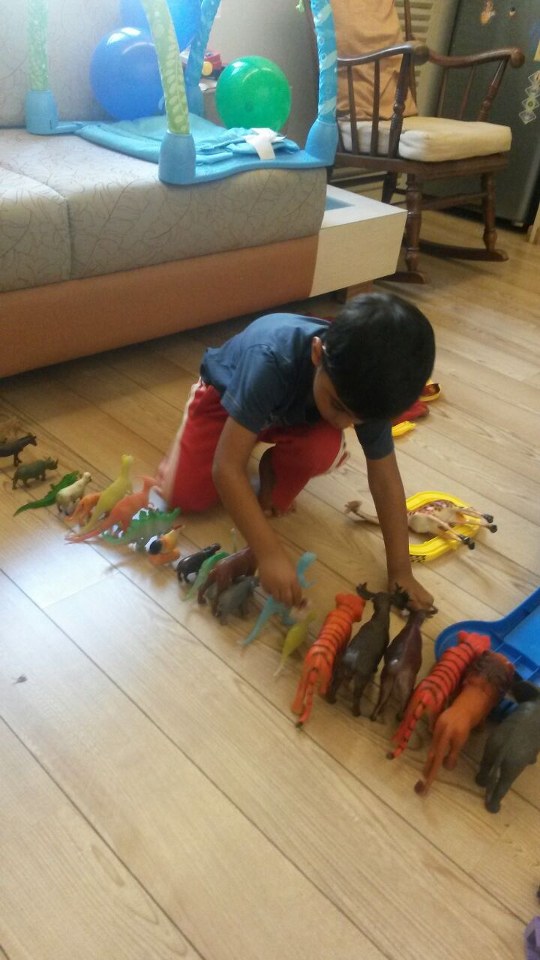
It is time to line up for the ‘animal school’ assembly.
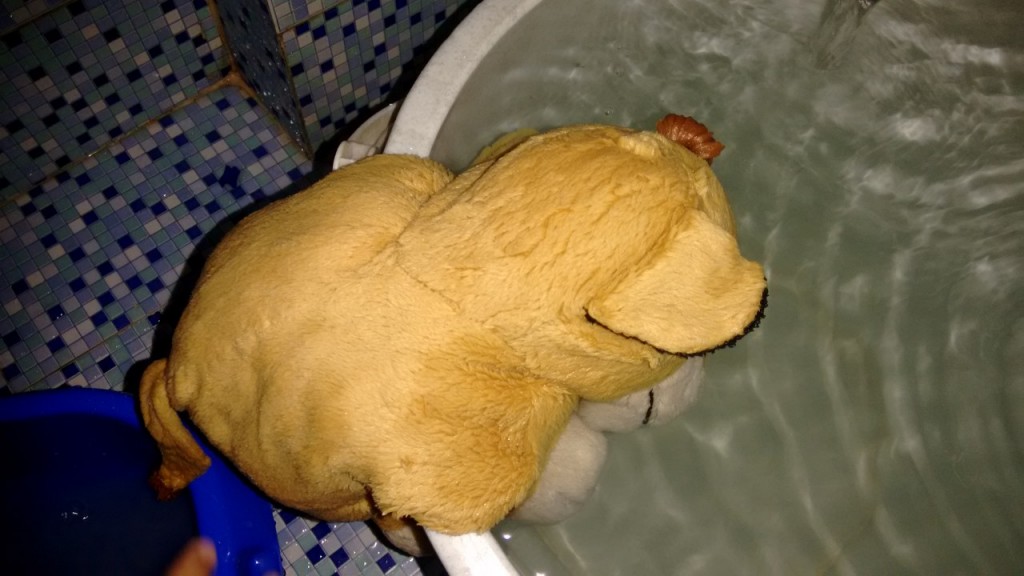
Simba at the water hole!
2. Building Blocks/ Lego
Ruhaan loves his Lego. He loves it more when I don’t bind him by the instructions on the box or hover around him to ensure that the pieces attach just as the illustration says. He is greatly stimulated by his Lego to narrate stories. He will name the mini-figures and impress me with a beautiful story. Lego has enormous creative potential.
3. Dress-Up
Lots of miscellaneous items of clothing lying around the house can come into play for this one. Use hats, caps, animal ears, scarves, purses, necklaces and others that you can think of. Collect these in one place for your little one and see what he can do out of these. Ruhaan is in the ‘I am Batman’ phase. So right from a towel to a t-shirt, everything works as a cape!
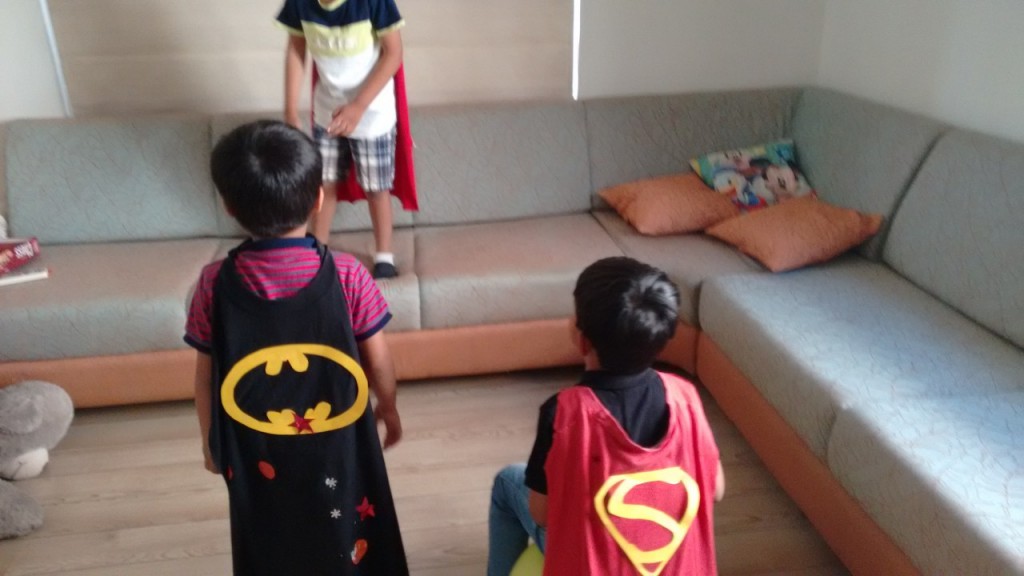
Lilliput Avengers in the making!
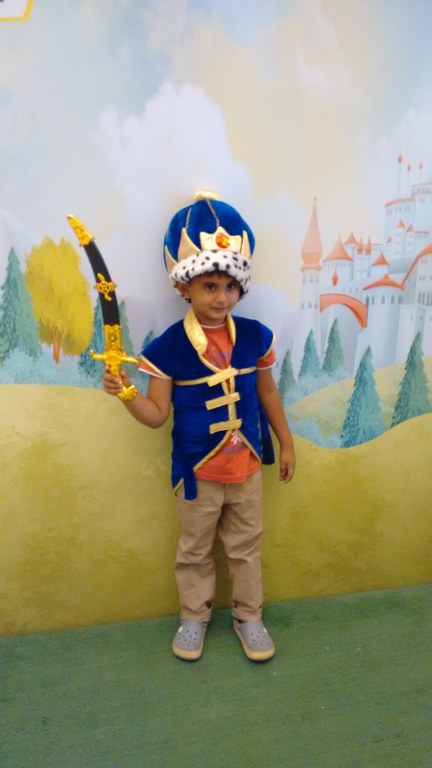
Sometimes kings wear rented clothes!
4. Tents
This one is Ruhaan’s absolute favourite. My husband is a great one at fueling this kind of imaginative pretend play. In some corner of our home, you will find at anytime, a tent in place. He loves his own little-corner. He decorates it as his heart pleases, collects basic items of daily use from around the house and sets up his own home. He invites us, pretends to cook for us and is hospitality personified. On other days, this corner will be transformed into a daunting fortress filled with demons and dragons and no-body is allowed in there! Use chairs, tables, clothes pins to secure the fabric and give it shape.
5. Nature
Nothing can contribute to imaginative and pretend play as nature can. Ruhaan is greatly inspired by nature. The props and opportunities out in the open are limitless. On one of our walks, Ruhaan immersed himself in collecting dry seeds lying on the side of the road. He said he was a gardener and his garden needed some planting! On yet another outdoor play time, he climbed a tree and adopted the role of a pilot, invited people on board his flight to Delhi and started handing out make-believe tickets!
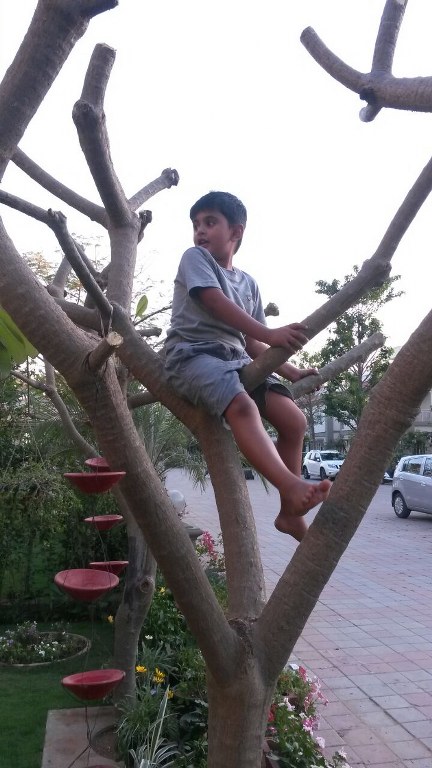
Are all the passengers on board??
6. Cartons and Boxes
These work wonders! For Ruhaan, a box has never been a box! It is either his treasure box where he will keep the shells he collected from the park! The cartons are usually his take on Jurassic park where his dinos are asleep! What he wants it to be, it is! These make excellent structures for us too! We hide, we seek and we play! He got me to make a treasure chest out of an ice-box that we had on hand.
7. Sheets and Blankets
Oh the versatility of these. These can make forts, traps for hunting, wraps for dolls or possibly a blanket of snow. Once these are out for play, your little one will amaze you with his imagination of scenario. These are great play ideas for when the outdoors is out of bounds.
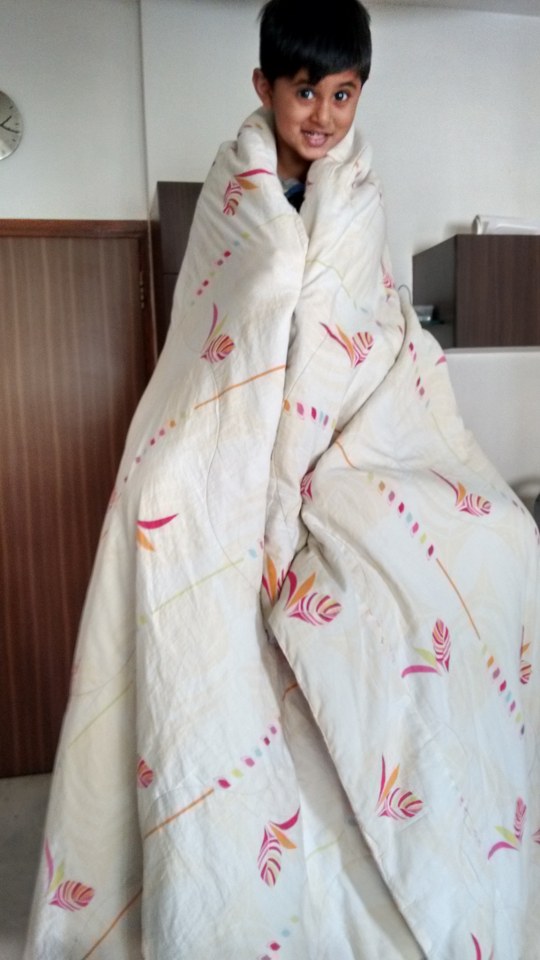
Being an angry Gulliver on daddy’s shoulders!
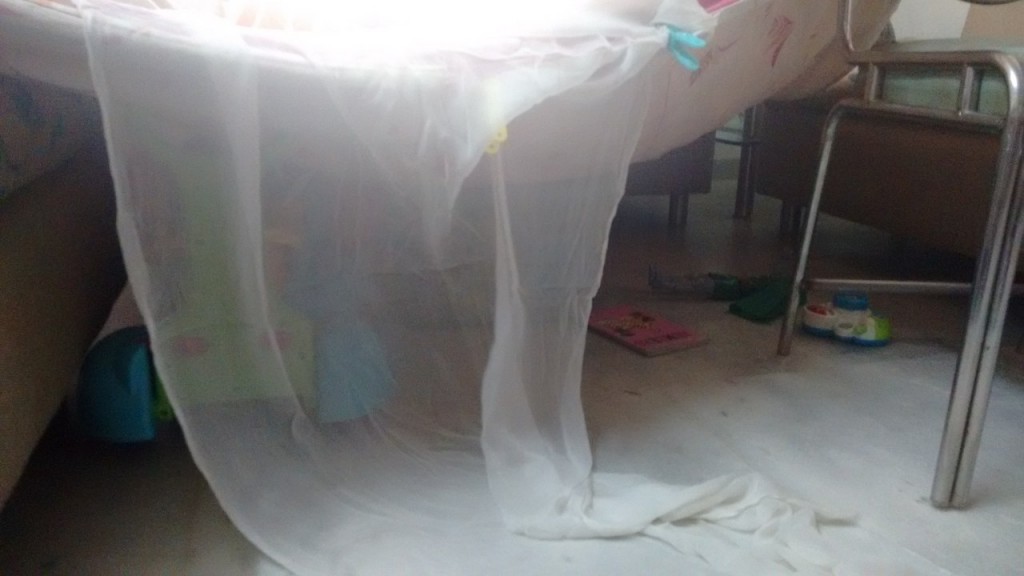
Tent, tent baby!
8. Pillows and Cushions
I think the love for these is genetic. The daddy loves to lounge, and the son loves to make mountains and plunk down! So we always have these in abundance lying around. Ruhaan also uses them often to make structures(as seen above), walls, obstacle race courses to navigate around. My younger one has inhereted this love too. She loves climbing over and rolling over the pillows. It’s a great practice for her gross motor skills.
9. Art
A plain sheet of paper. Brushes. Paints. There is a lot to love and explore here. There is scope for a child to invent a new world here. I made a paint wall in my storage room and gave Ruhaan a free hand to paint. It was a good way to keep him creatively engaged. I inspired him to then tell me a story about what he had painted.
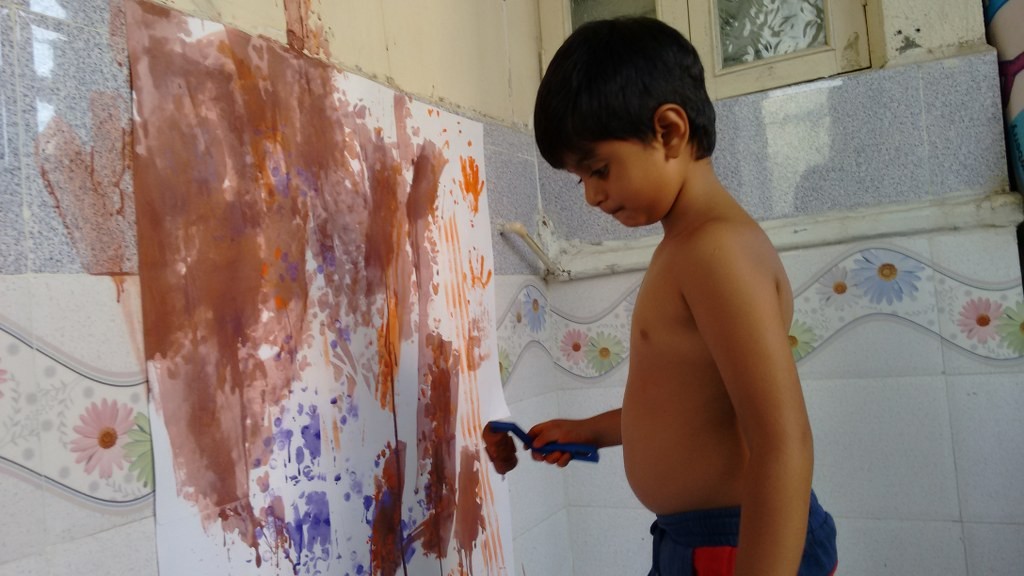
Painting something so awesome!
Food For Mommy’s Thought:-Perhaps imagination is only intelligence having fun.- George Scialabba

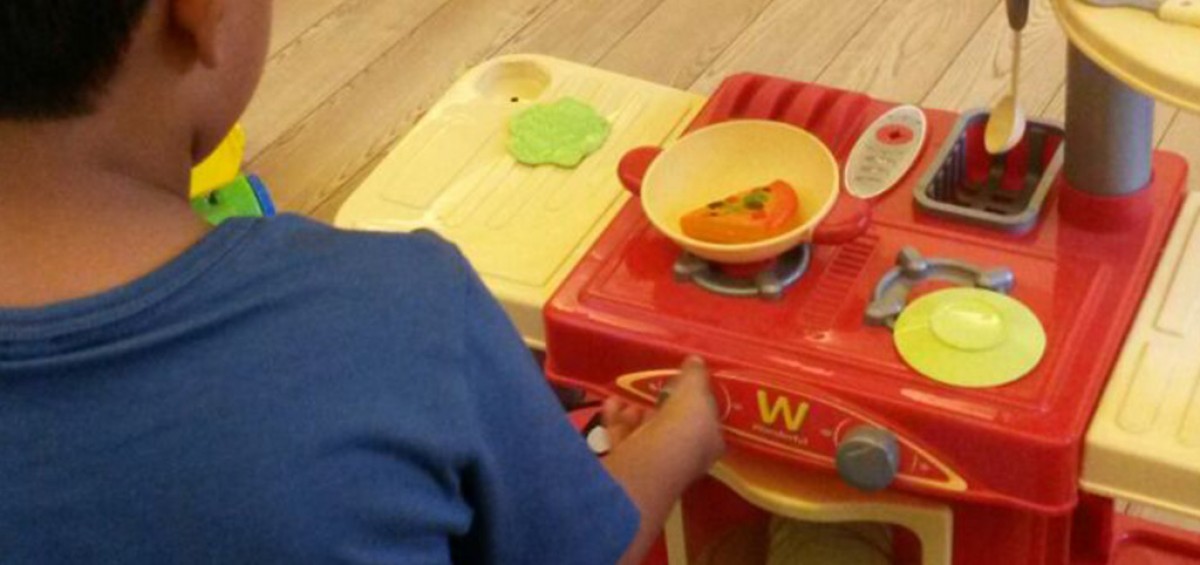
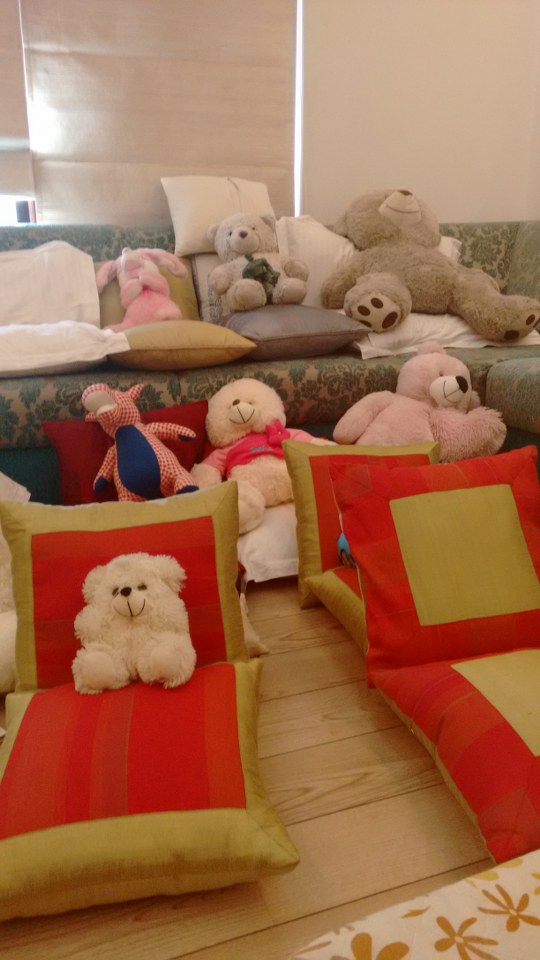
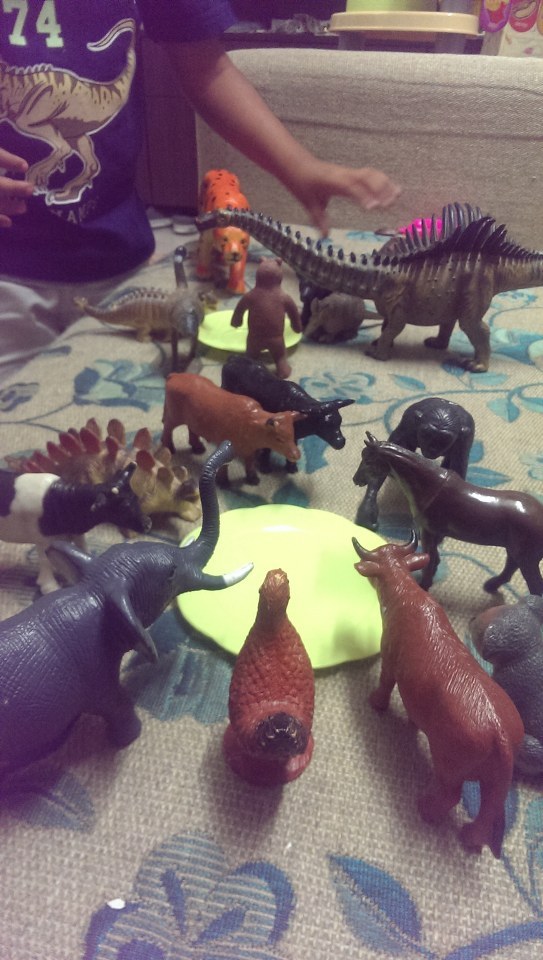
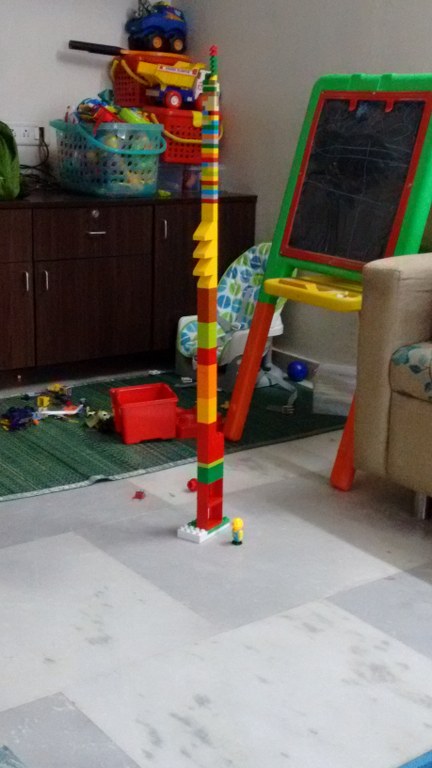
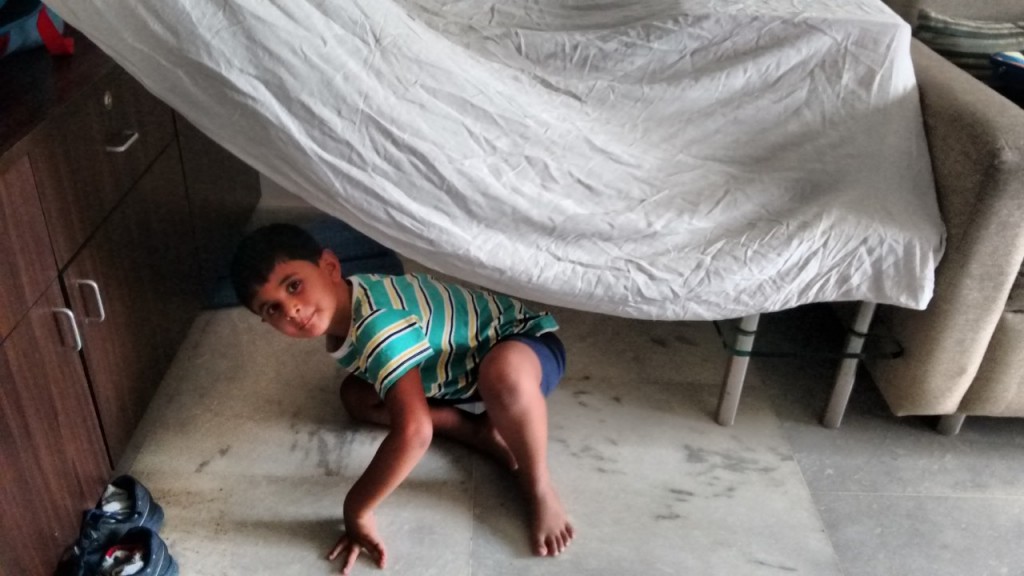
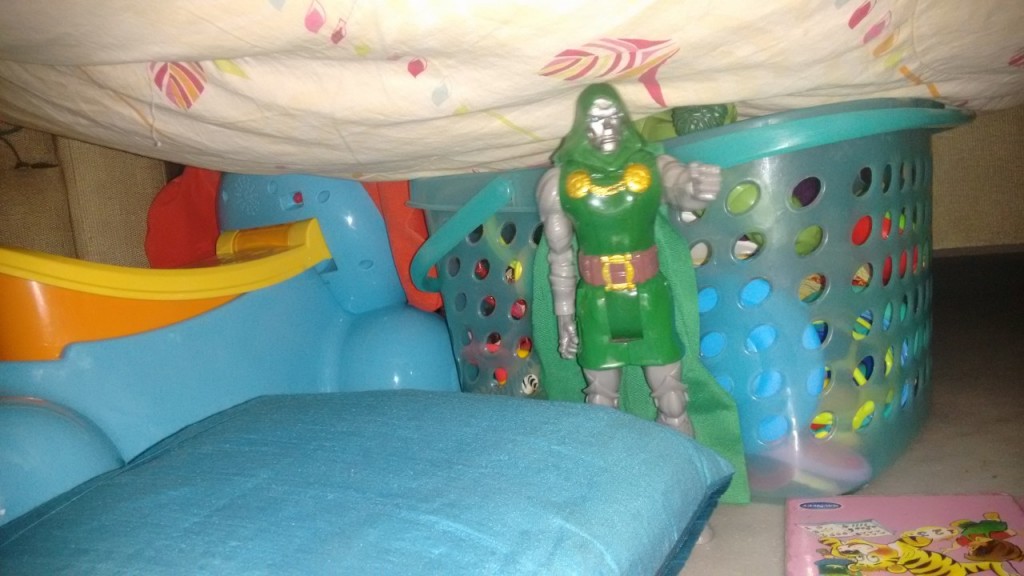
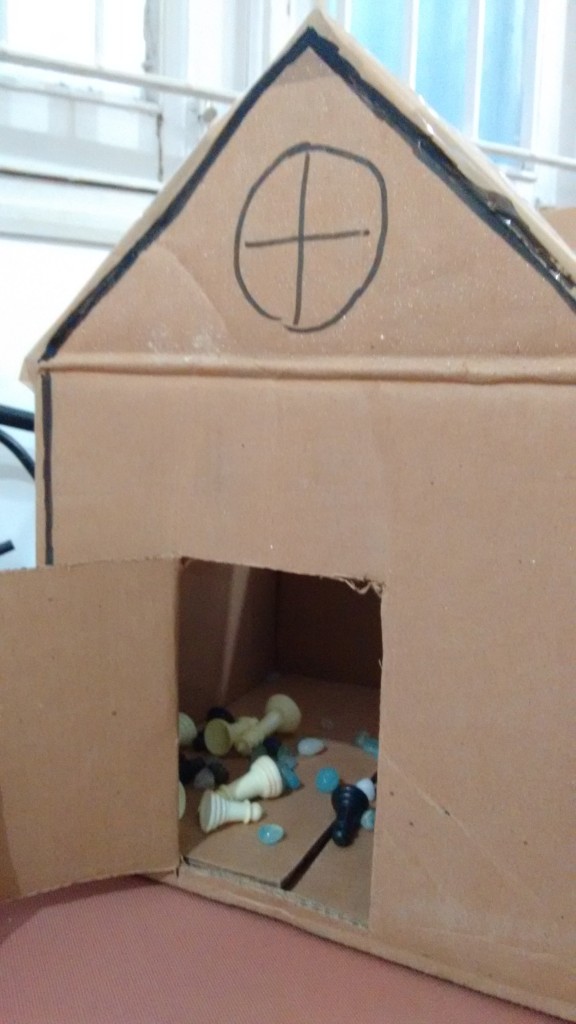
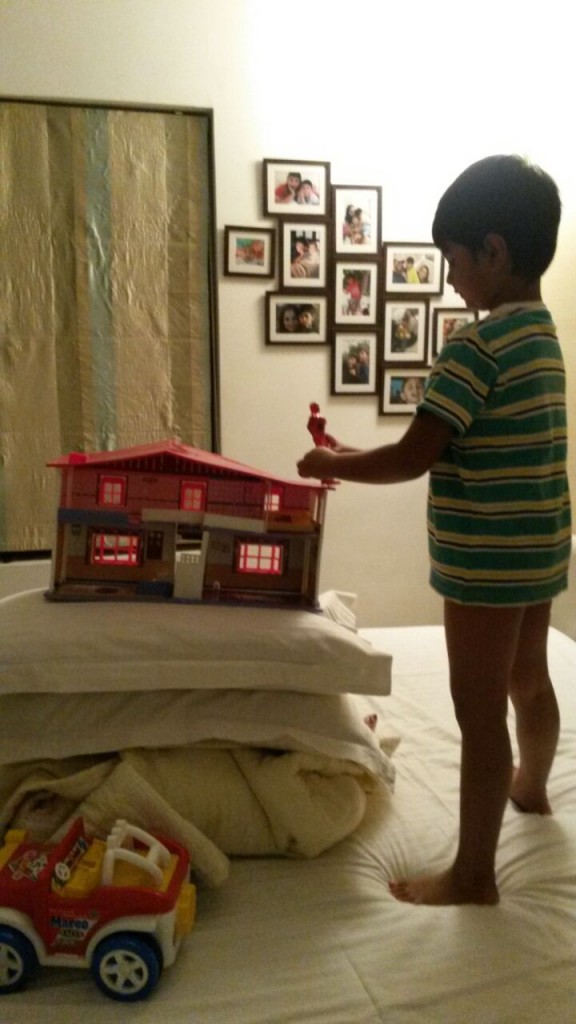
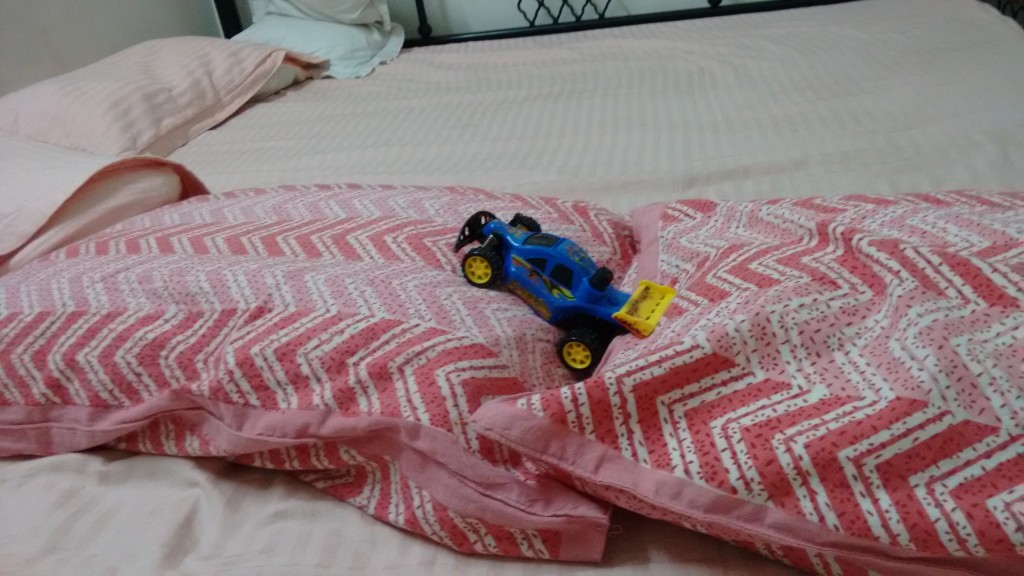
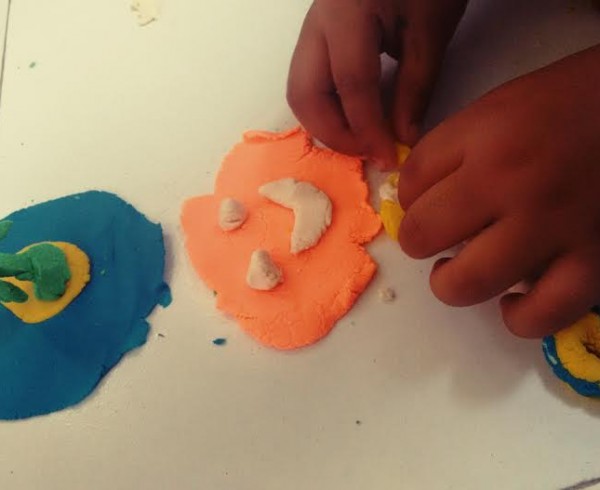
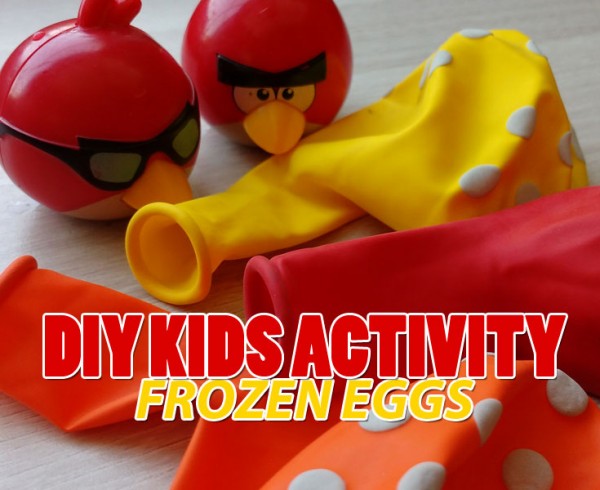
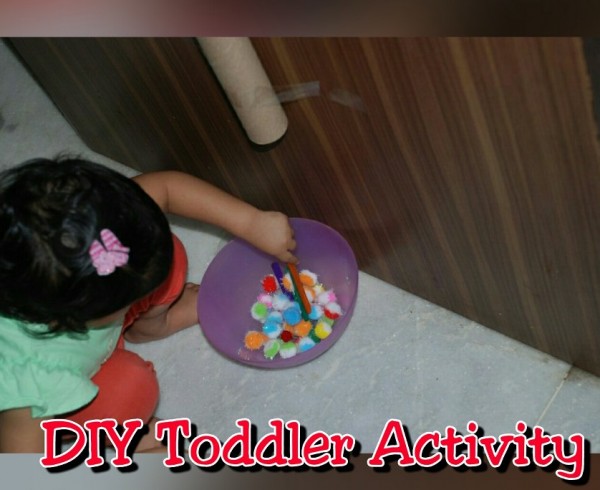
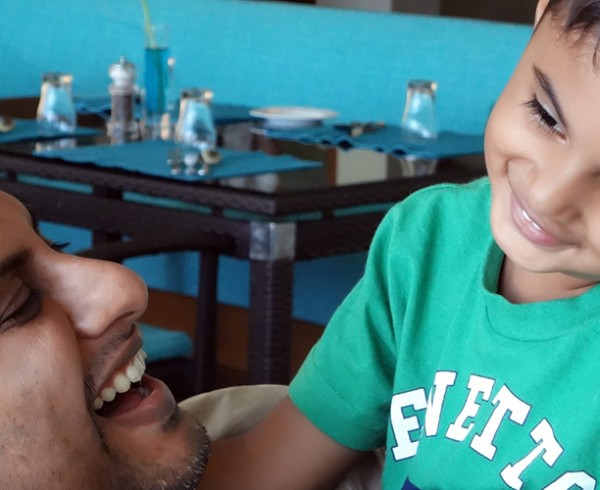
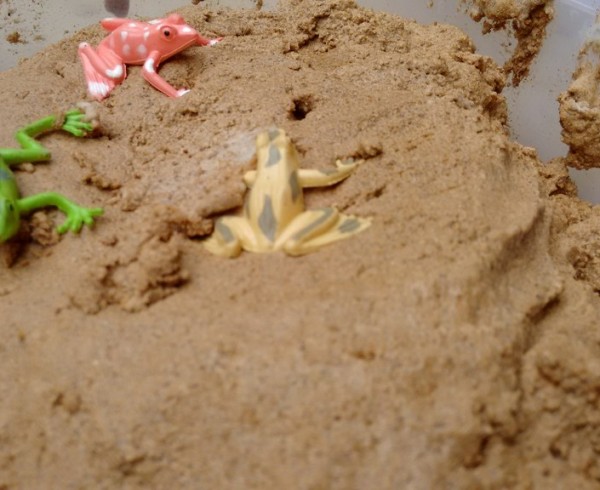
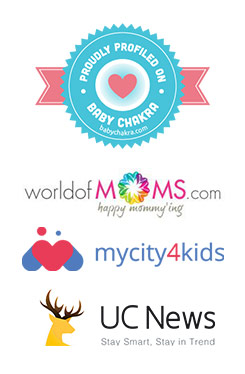
Leave a Comment